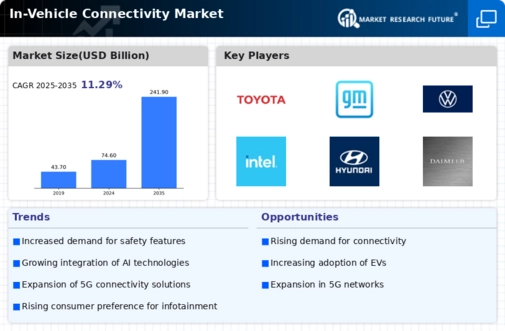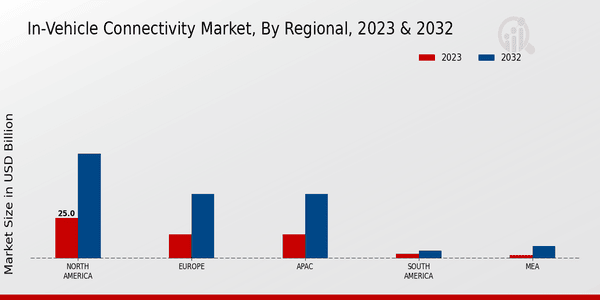The In-Vehicle Connectivity Market is gaining momentum as advancements in technology and consumer demand for enhanced connected experiences continue to shape the automotive landscape. This market encompasses various connectivity solutions, including but not limited to infotainment systems, telematics and vehicle-to-everything (V2X) communication.
The competitive landscape is characterized by both traditional automotive manufacturers and technology companies collaborating to innovate and provide superior connectivity features. With the increasing adoption of smart devices and an emphasis on integrating the digital experience within vehicles, companies are vying for a significant share of this expanding market. Factors such as rapid urbanization, increasing disposable incomes, and a growing focus on sustainability are driving connectivity growth, pushing players to develop more advanced, user-friendly systems.
Toyota holds a significant position in the Global In-Vehicle Connectivity Market, leveraging its rich automotive heritage combined with its focus on innovation to enhance driver and passenger experiences. Known for its reliable and fuel-efficient vehicles, Toyota has strategically invested in connectivity technologies, recognizing the importance of seamless data transfer and connectivity features that elevate user experiences. One of the notable strengths of Toyota is its commitment to research and development, which facilitates the integration of advanced telematics and infotainment systems within its vehicle portfolio.
This focus on connectivity not only aligns with modern consumer preferences but also promotes safety and convenience through features that enable drivers to remain connected while on the road. Toyota's global presence further solidifies its competitive edge as it tailors its connectivity solutions to meet diverse market needs across different regions.
General Motors is another key player in the Global In-Vehicle Connectivity Market, marked by its dedication to pioneering technologies that enhance the driving experience. The company's focus on developing robust in-vehicle connectivity solutions is driven by a desire to provide customers with intuitive and versatile functionalities, such as real-time navigation, entertainment options, and vehicle diagnostics. General Motors has invested heavily in its connected services platform, known for its user-friendly interface and seamless integration with smartphones and other external devices.
This commitment to connectivity also extends to safety features, where advanced systems aim to connect vehicles to each other and their surroundings, enhancing overall road safety. General Motors continues to evolve and expand its in-vehicle connectivity offerings, catering to the changing demands of consumers while maintaining a strong position in the competitive automotive sector.















